Energy Drink Sorbet
Time and energy always in short supply? If you have no qualms about seeking your re-energizing solutions from a canned mixture of concentrated caffeine and taurine, this sorbet might be just what you seek. But actually, you might want to try it even if you feel cautious about energy drinks – read on!
Red Bull and all the other energy drinks – love them or hate them. The original precursor to Red Bull (Krating Daeng) helped dead-tired lorry drivers in Thailand to stay awake during excessively long working hours on the roads. It is clearly questionable whether relaying on energy drinks to stay awake really makes much sense from a traffic security perspective but one thing is clear: When introduced to the rest of the world in the late 80′s, Red Bull quickly established itself as the quintessential quick and canned energy-fix , always ready to pick you up, give you wings and see you through the day.
Other similarly charged energy drinks quickly followed suit. In some countries, however, the cans loaded with caffeine and taurine were deemed so potentially detrimental to health that they were banned (bans that eventually often came to be lifted, however).
So, how unhealthy are the energy drinks?
While there are conflicting studies about the health-effects of energy drinks, the experienced boost in energy mainly comes from two ingredients – caffeine and sugar. Most would probably agree that overdosing on any of these two substances is not to be recommended. Then again, this also applies to heavy consumption of coffee or sweetened soft drinks in general.
It may well be that the claims about both negative and positive effects of energy drinks per se are exaggerated. The European Food Safety Authority (EFSA) has for instance concluded that taurine levels normally found in energy drinks could not be considered a health concern. What about the level of caffeine? Often, a can of energy drink does not contain more than roughly the equivalent of a cup of coffee (80 mg / 250 ml)!
Given the suggestive way energy drinks generally are marketed and perceived, it would not be too surprising if another contributing factor to any energy rush you might experience simply could be caused by the placebo effect! Disappointed? Don’t be – because this means that our Energy sorbet will be healthier than expected, yet still have a great potential to actually affect your guests when you tell them what it is made of!
The making of Energy sorbet
Difficult to make? Not really – just combine the energy drink with a simple sugar syrup and freeze! Since we are dealing solely with liquids here, I added a lightly whipped egg white to help maintain a nice consistency. Also, some inverted sugar was added to help reduce ice crystallisation somewhat and make the sorbet slightly easier to scoop (agave nectar, but you could also use corn- or glucose syrup).
If you wonder about the bubbles in the photo below, I used sparkling water for that batch (but ordinary still-water works as well!). If you wonder about the Egg test (for getting the right concentration of sugar in a sorbet), follow this link!
Even if you feel cautious about energy drinks, this Energy sorbet could still be interesting! One single can of energy drink goes quite a long way in the recipe, so the actual amounts of caffeine and taurine per serving will be markedly lower than if you would drink a can. And you will still be able to enjoy the particular flavour of the energy drink.
Combine that with the highly probable placebo effect caused by the words “Energy drink”, and your guests may actually leave the dessert table feeling much more energized than they – objectively speaking – should!
- 250 ml Red Bull or equivalent Energy drink
- 250 ml water
- 5 tablespoons Agave nectar (or other inverted sugar, i e corn syrup or honey)
- 5 tablespoons (50 ml) sugar
- 1 egg white
- Combine the water and the sugar(s) to a simple sugar syrup (either by heating the mixture for a few minutes until all the sugar has dissolved or by shaking them until this has happened). If heated, allow the sugar syrup to cool down, preferably in the fridge.
- Once the sugar syrup has cooled down, combine it with the energy drink and blend.
- Churn in an ice cream machine according to instructions, adding a slightly whipped egg white to the sorbet base towards the end of the churning. If still-freezing without an ice cream machine, put the sorbet base in a freezer safe-container, put it in a freezer and churn the base by hand (using a fork or equivalent) every 45 minutes or so for at least three hours (if so, add the slightly whipped egg white only when the sorbet base has begun to stabilise somewhat).
- Cover the sorbet with plastic film, put on the lid to the freezer-safe container and leave to froze. Allow the sorbet some time to defrost a bit before serving.
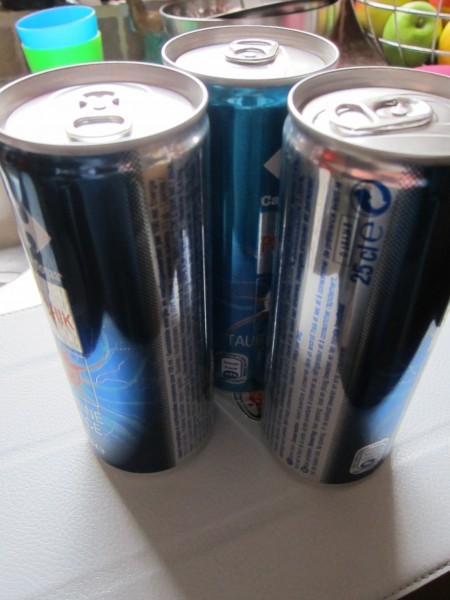
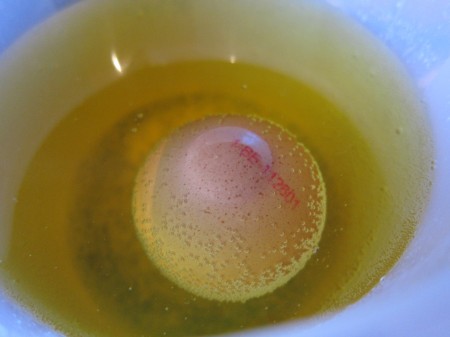
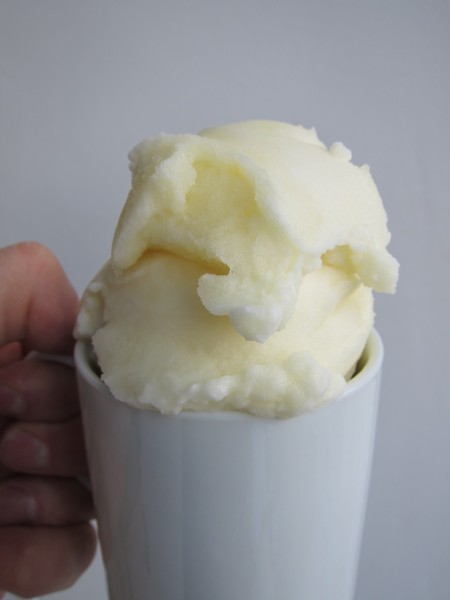
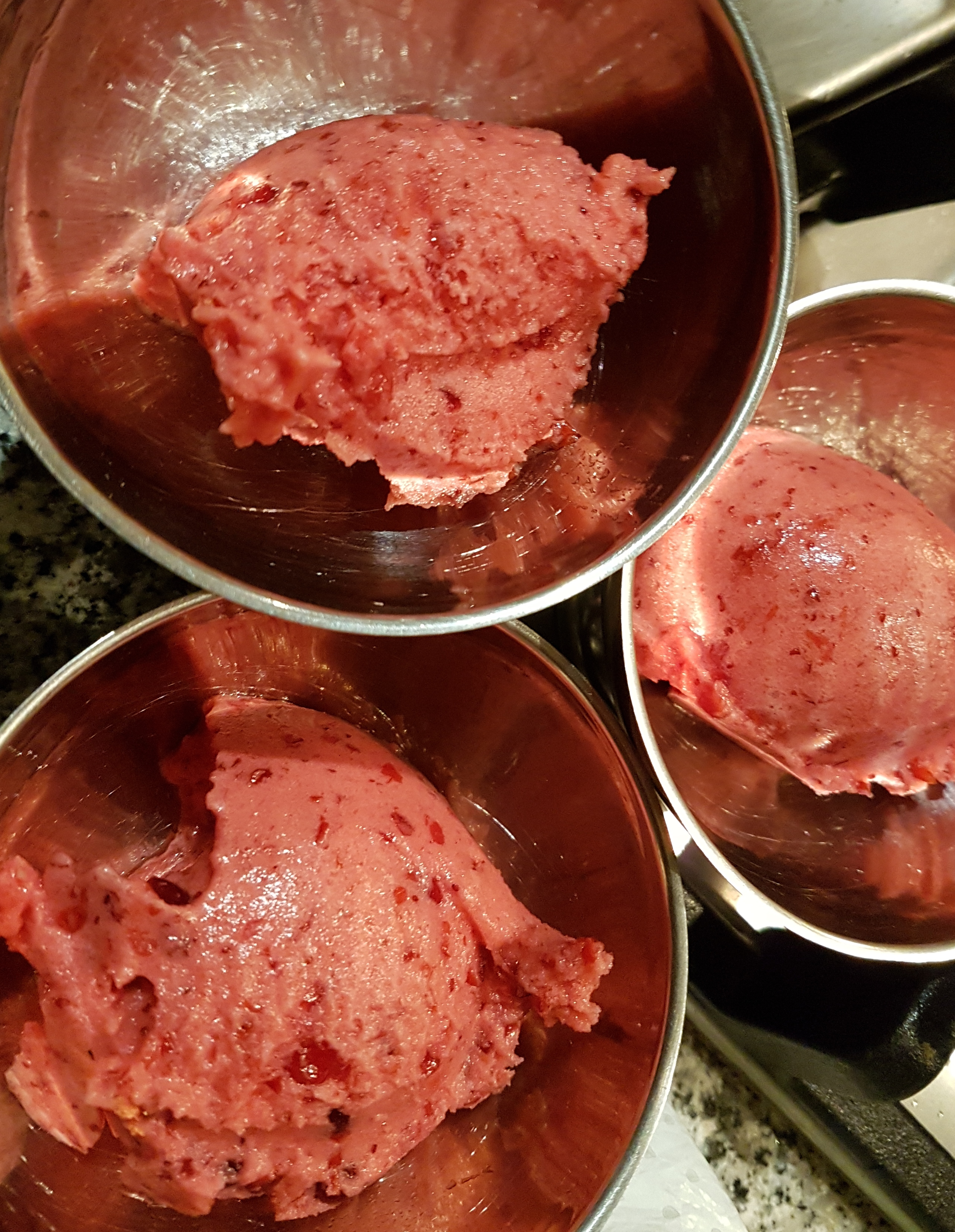
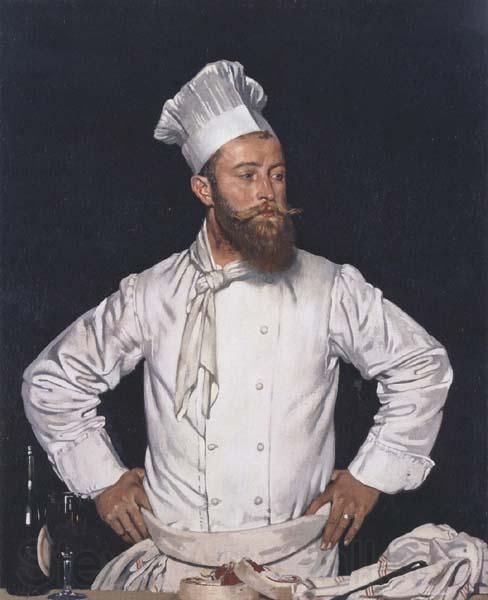
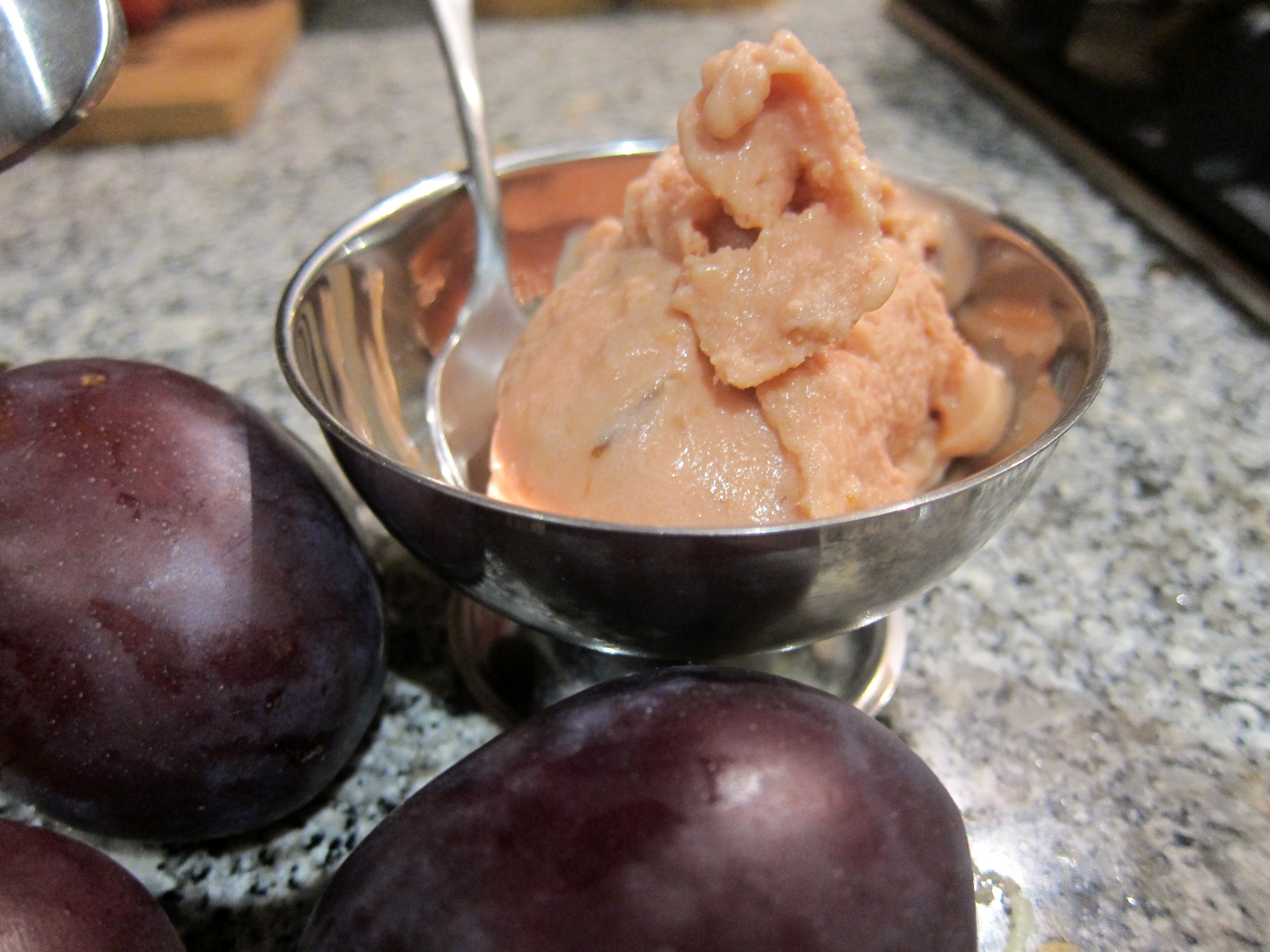


You should brand your own energy icecream. And market and sell.
Do you make and brand already your own energy icecream?
Nope – feel free to make an attempt yourself, though 😉
I could easily make a energy drink ice cream… I’ve mastered the art of making perfect cream. Lol.
I have some wine ice creams, cocktail and beer ice creams, a copycat of Jeni’s Frozé sorbet that I’ve made into an ice cream version and a sorbet gummy as well:
Ice cream is a science, and once you understand how sugars, ice crystallization, the ratios of things like fat to protein to sugar, and and reduce water content or occupy it with protein, you’ll have a perfect ice cream every time. Not too icy, just tightly formed ice crystals that make for a dense and rich ice cream. Many people make the mistake of issuing too much fat. You want it to be super premium level, 14-16%, I say 16% is perf.
But you can’t fill the rest of that out with just regular milk and sugar alone. You need a starch, &/or a dry ingredient to absorb the water that’s in the milk you’re adding. Skim milk powder is your best friend…
Ice cream does really well with an. Invert, or corn syrup, as suggested in this recipe, and really all sorbet recipes should have some added, that is if you want to be able to scoop into it after it’s been in the freezer for days or weeks. The fresh egg sorbet base trick is definitely a good one, but a hydrometer or other cheap instrument from Amazon, can accurately measure sugar content. So it’s good to have one around if you don’t have any fresh eggs. Sugar content is extremely important for ice crystal formation in ice cream and sorbet. You can’t skimp on the sugar, but there’s a certain point where it’s too much, and makes a gooey or slimy kind of ice cream. Syrupy I suppose.
The egg trick will not work in an ice cream though. So just memorizing sugar ratios for your recipes is important. Also keep in mind, that when using milk powder, this has lots of lactose, so it’s sweet too, so just don’t overdo it with the regular sugar if you’re using milk powder, or just adjust for the sweetness. There are conversion charts avail online to make this easier. If you’re lazy amd aren’t into doing the research, just get as close as you can, and take detailed notes and adjust the next time around. Reduce a Tbsp or so of sugar until it’s right.
The best thing to do if just trying to get the hang of it, is just look at as many recipes as you can’t that are similar to what you want to do. For me, it was looking at a Philadelphia style ice cream recipes, then I looked at Sicilian gelato recipes, and combined ideas from both. Then I made a cheesecake ice cream based around the recipe developed, and ended up with something nearly identical to Jeni’s ice cream base. Mine was just a more pronounced cream cheese flavor. My trick was instead of using regular cream cheese or even the milk powder on this one, I used cream cheese powder. I’ve also done the same with yogurt powder and had huge success there as well. Try it!
That’s how you make frozen yogurt. Lol. It’s just like the fro-yo shop.
-Chef Shaun
@pallasgourmetedibles IG
Why does it say that you need agave nektar if it is not mentioned in the instructions
Hi Sixten,
Thanks for the comment. That was the reference to ‘inverted sugar’ but I’ve made that more clear now in the text:-).